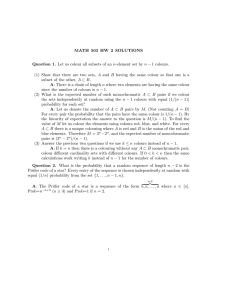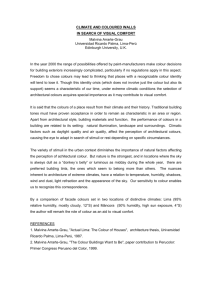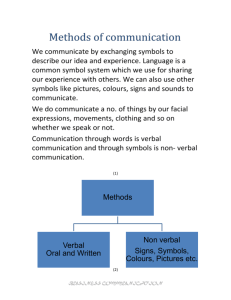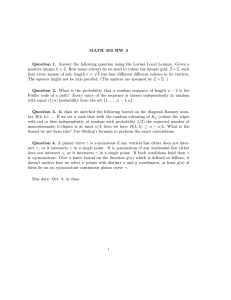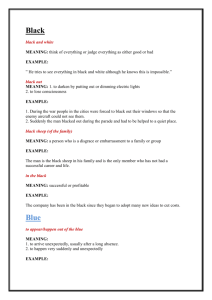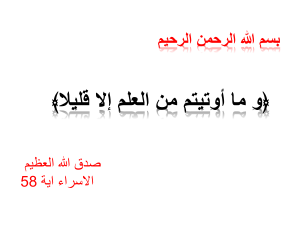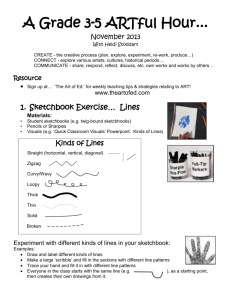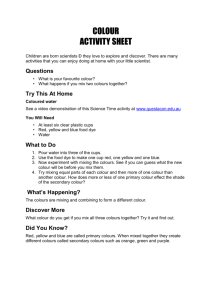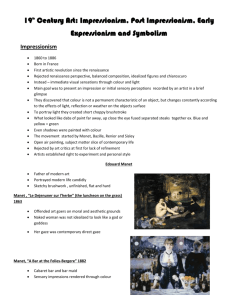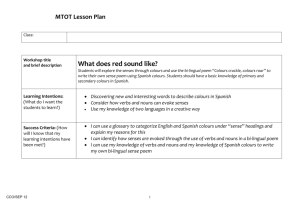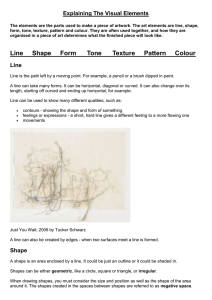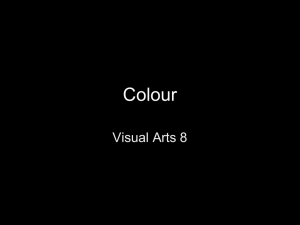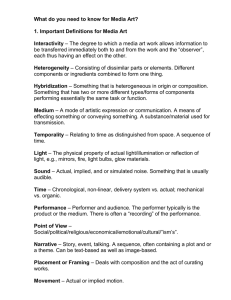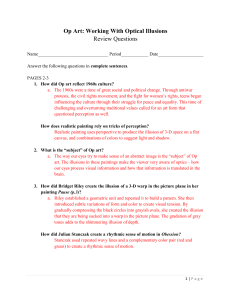Lesson Focus: Movement in Squares by Bridget Riley (1961
advertisement
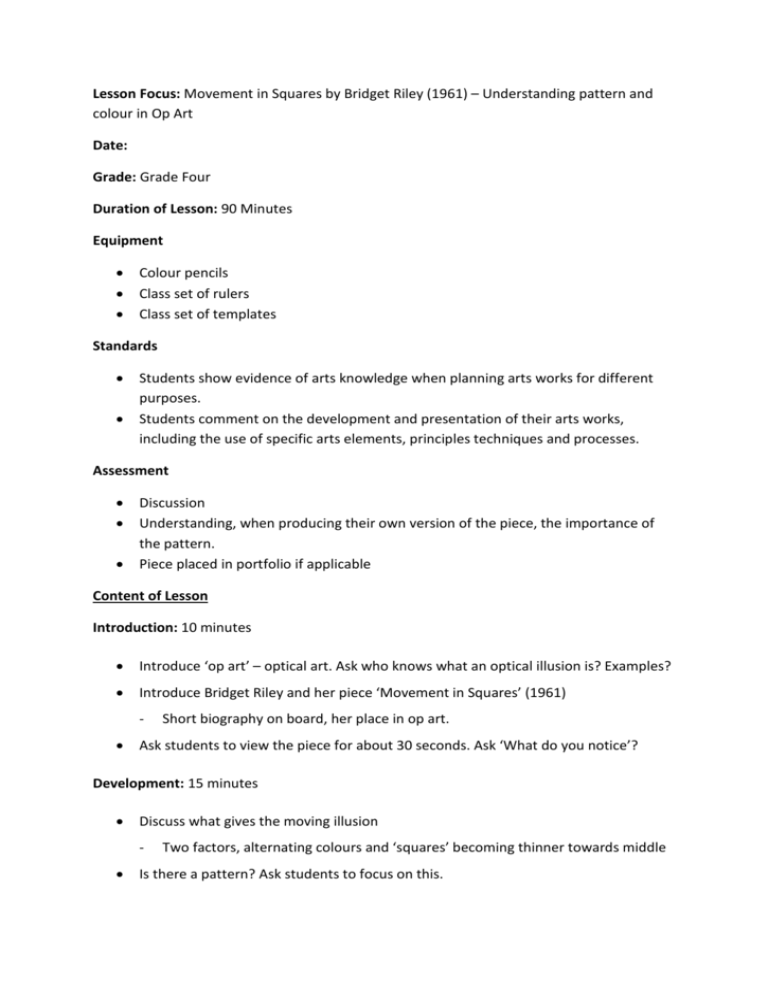
Lesson Focus: Movement in Squares by Bridget Riley (1961) – Understanding pattern and colour in Op Art Date: Grade: Grade Four Duration of Lesson: 90 Minutes Equipment • • • Colour pencils Class set of rulers Class set of templates Standards • • Students show evidence of arts knowledge when planning arts works for different purposes. Students comment on the development and presentation of their arts works, including the use of specific arts elements, principles techniques and processes. Assessment • • • Discussion Understanding, when producing their own version of the piece, the importance of the pattern. Piece placed in portfolio if applicable Content of Lesson Introduction: 10 minutes • Introduce ‘op art’ – optical art. Ask who knows what an optical illusion is? Examples? • Introduce Bridget Riley and her piece ‘Movement in Squares’ (1961) - • Short biography on board, her place in op art. Ask students to view the piece for about 30 seconds. Ask ‘What do you notice’? Development: 15 minutes • Discuss what gives the moving illusion - • Two factors, alternating colours and ‘squares’ becoming thinner towards middle Is there a pattern? Ask students to focus on this. • Can you identify curved pattern, straight patterns? • Would it only work with black and white? • Colours are complimentary / ‘opposite’. Black and white. Other colour combinations. Use harsh combinations (Black and white, Blue and yellow, Green and red). Would blue and purple be as effective? Consolidation and practice: 50-60 minutes (First section should only take 15 minutes) • Students are first given a printed template – supplied on website • Ask them to colour in black (and white), alternating squares. Explain what this means. No same colours right next to each other - Only diagonal. • Three examples up to the front: pass around the class. Was the desired effect created? (Second section – students create their own) • Students design their own template. Measure rectangle on page. • Rows are always the same distance apart; columns vary in width – Model on whiteboard. • Remind students to make the columns gradually closer together, then widen again. • Pull out group may be necessary. • Students, once finished template, fill in with any colours they wish. • Use piece for folio if applicable Closure: 5 minutes • • Discuss what parts of the pattern achieved the effect Examples from class of what colour combinations worked well




